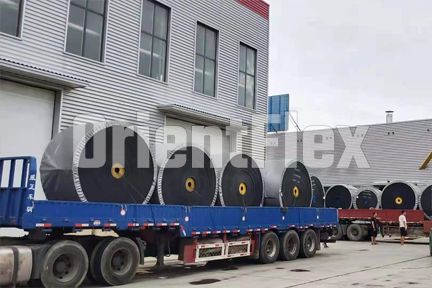- Email orientflex@orientrubber.com
- WhatsApp / Phone+86 180 3186 9514
Conveyor belt deviation is a common fault of conveyors, which mainly refers to the deviation of the centerline of the conveyor belt from the longitudinal centerline of the conveyor when the conveyor is running. The root cause of the deviation of the conveyor belt is that the inclined rollers on both sides of the belt conveyor generate lateral force when they contact the conveyor belt. When the lateral forces on both sides are not equal, the conveyor belt will deviate, which is mainly manifested as The following points:
1. The center lines of the conveyor head and tail rollers are not parallel, so that the tightness of the two sides of the conveyor belt is inconsistent, and the conveyor belt moves to the tight side;
2. The quality problems of the conveyor belt itself (such as uneven elongation, uneven bending, etc.), as well as serious wear on the edge of the belt, will cause the tension on both sides of the conveyor belt to be inconsistent and cause deviation;
3. The joint of the conveyor belt is not correct;
4. Improper installation of the idler rollers, exerting a deflection force on the conveyor belt;
5. Improper feeding of the conveyor belt, resulting in uneven force on the conveyor belt and deviation;
6. The roller sticks to the material, which causes a local change in the radius of the roller, which causes the conveyor belt to shift laterally.
Regarding the various forms of deviation of the conveyor belt, Mingcheng has summarized the rules for everyone: the conveyor belt runs tight and does not run loose; it runs high and does not run low; after running, it does not run forward.
You can contact or visit us in our office from Monday to Friday from 8:00 - 18:00





